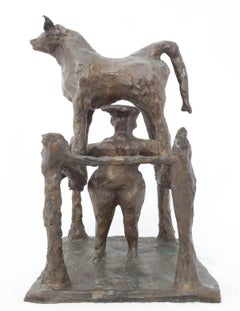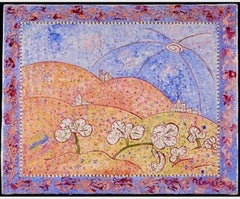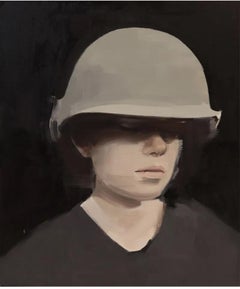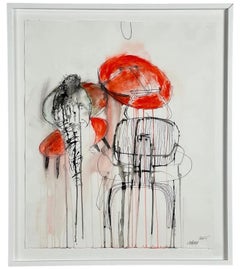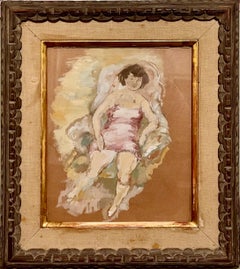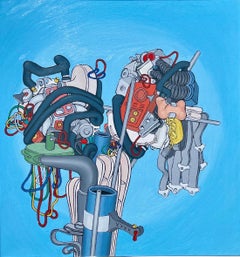Lions Gallery Figurative Paintings
Early 20th Century Post-Impressionist Figurative Paintings
Bronze
20th Century Folk Art Animal Paintings
Canvas, Oil
2010s Expressionist Figurative Paintings
Canvas, Oil
2010s Contemporary Figurative Paintings
Paper, Acrylic
Early 20th Century Expressionist Figurative Paintings
Paper, Gouache, Cardboard
1990s Pop Art Abstract Paintings
Canvas, Oil
1980s Expressionist Figurative Paintings
Watercolor, Gouache, Archival Paper
2010s Street Art Figurative Paintings
Canvas, Paint, Spray Paint
20th Century Post-Impressionist Figurative Paintings
Lucite, Acrylic
1950s American Modern Figurative Paintings
Canvas, Oil
20th Century Interior Paintings
Canvas, Oil
20th Century Pop Art Figurative Paintings
Canvas, Oil
1980s Folk Art Figurative Paintings
Paper, Gouache
1980s Folk Art Figurative Paintings
Paper, Gouache
1980s Folk Art Figurative Paintings
Paper, Gouache
20th Century Folk Art Animal Paintings
Canvas, Oil
1920s American Modern Landscape Paintings
Canvas, Oil
20th Century Post-Impressionist Figurative Paintings
Lucite, Acrylic
20th Century Expressionist Portrait Paintings
Oil, Board
20th Century Pop Art Abstract Paintings
Canvas, Oil
20th Century Post-Modern Figurative Paintings
Oil
20th Century Modern Figurative Paintings
Canvas, Oil
21st Century and Contemporary Folk Art Figurative Paintings
Terracotta, Acrylic, Wood Panel
20th Century Modern Abstract Paintings
Paint, Ink, Gouache, Rice Paper
1960s Folk Art Figurative Paintings
Canvas, Oil
20th Century Folk Art Figurative Paintings
Canvas, Oil
20th Century Folk Art Figurative Paintings
Canvas, Oil
20th Century Folk Art Figurative Paintings
Canvas, Oil
1960s Surrealist Figurative Paintings
Paper, Oil
20th Century Post-Impressionist Figurative Paintings
Canvas, Oil
20th Century Expressionist Figurative Paintings
Canvas, Oil
20th Century Post-Modern Landscape Paintings
Canvas, Oil
20th Century Post-Modern Landscape Paintings
Canvas, Oil
20th Century Post-Modern Landscape Paintings
Canvas, Oil
1990s Contemporary Figurative Sculptures
Metal
Mid-20th Century Surrealist Figurative Paintings
Paint, Board
20th Century Neo-Expressionist Figurative Drawings and Watercolors
Paper, Oil Pastel
1990s Abstract Expressionist Abstract Paintings
Canvas, Oil
1970s Neo-Expressionist Figurative Paintings
Canvas, Oil
Mid-20th Century Expressionist Interior Paintings
Canvas, Oil
Early 2000s Contemporary Animal Paintings
Canvas, Oil
Early 2000s Contemporary Animal Paintings
Canvas, Oil
Mid-20th Century Modern Still-life Paintings
Oil, Canvas
Mid-20th Century Expressionist Figurative Paintings
Oil, Panel
1960s Abstract Expressionist Abstract Paintings
Canvas, Jute, Oil
Early 2000s Abstract Expressionist Abstract Paintings
Canvas, Oil
1970s Abstract Abstract Paintings
Paper, Pastel, Ink, Watercolor
1970s Abstract Abstract Paintings
Paper, Pastel, Ink, Watercolor, Mixed Media
20th Century Abstract Paintings
Canvas, Oil
1970s Abstract Abstract Paintings
Canvas, Oil
20th Century Modern Figurative Paintings
Canvas, Oil
20th Century Modern Landscape Paintings
Canvas, Oil
21st Century and Contemporary Pop Art Figurative Paintings
Metal
Early 2000s Contemporary Figurative Paintings
Paper, Mixed Media
20th Century Modern Figurative Paintings
Canvas, Oil
20th Century Fauvist Figurative Paintings
Oil, Board
Mid-20th Century American Modern Figurative Paintings
Masonite, Oil
Mid-20th Century American Modern Figurative Paintings
Masonite, Oil
20th Century Folk Art Landscape Paintings
Canvas, Oil
20th Century Expressionist Figurative Paintings
Oil, Board
